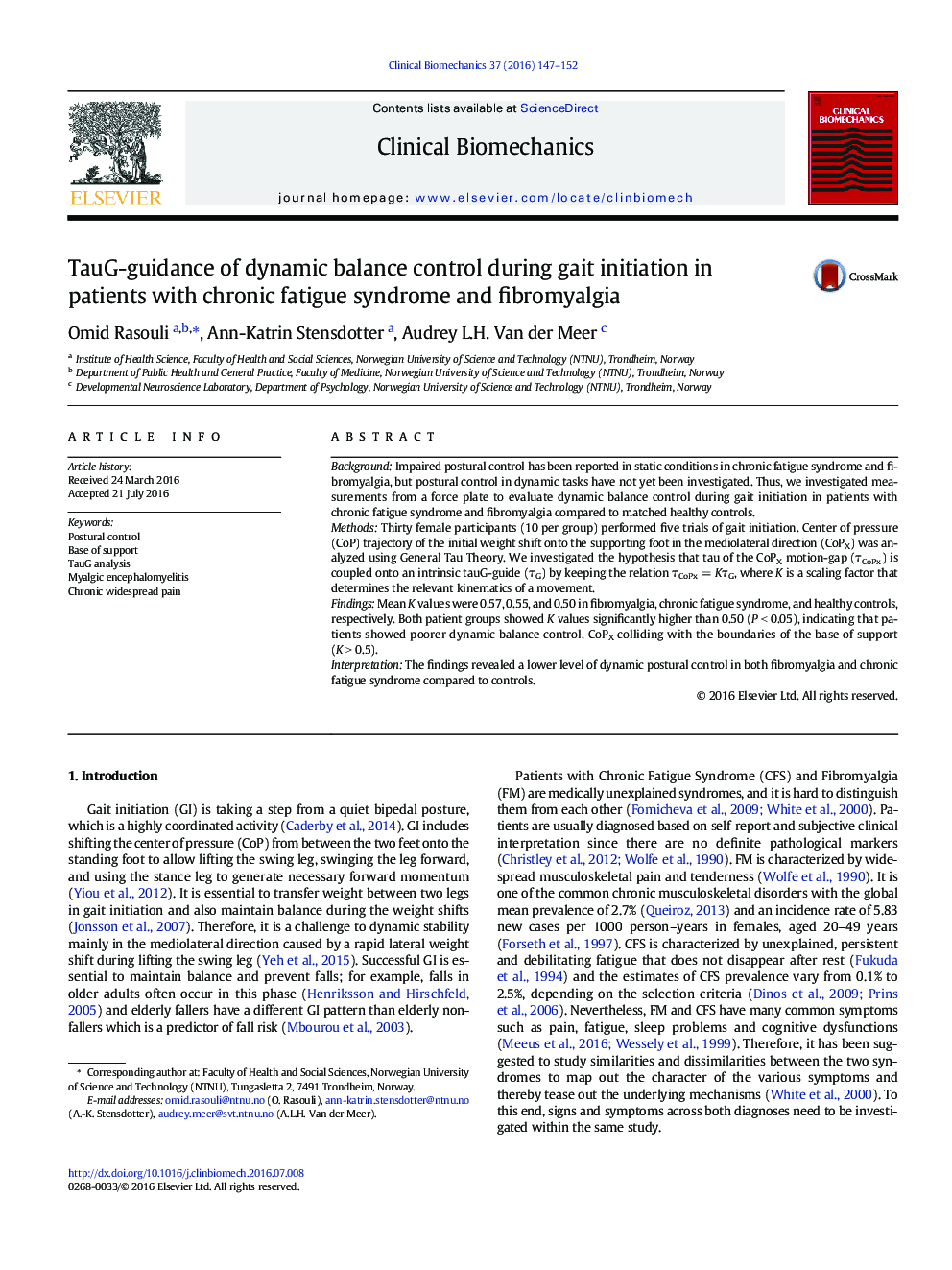| Article ID | Journal | Published Year | Pages | File Type |
|---|---|---|---|---|
| 4050029 | Clinical Biomechanics | 2016 | 6 Pages |
•Fibromyalgia and chronic fatigue syndrome showed a lower level of postural control in gait initiation.•There was no significant difference between fibromyalgia and chronic fatigue syndrome in dynamic postural control.•Fibromyalgia patients showed a higher K value compared to the controls.
BackgroundImpaired postural control has been reported in static conditions in chronic fatigue syndrome and fibromyalgia, but postural control in dynamic tasks have not yet been investigated. Thus, we investigated measurements from a force plate to evaluate dynamic balance control during gait initiation in patients with chronic fatigue syndrome and fibromyalgia compared to matched healthy controls.MethodsThirty female participants (10 per group) performed five trials of gait initiation. Center of pressure (CoP) trajectory of the initial weight shift onto the supporting foot in the mediolateral direction (CoPX) was analyzed using General Tau Theory. We investigated the hypothesis that tau of the CoPX motion-gap (τCoPx) is coupled onto an intrinsic tauG-guide (τG) by keeping the relation τCoPx = KτG, where K is a scaling factor that determines the relevant kinematics of a movement.FindingsMean K values were 0.57, 0.55, and 0.50 in fibromyalgia, chronic fatigue syndrome, and healthy controls, respectively. Both patient groups showed K values significantly higher than 0.50 (P < 0.05), indicating that patients showed poorer dynamic balance control, CoPX colliding with the boundaries of the base of support (K > 0.5).InterpretationThe findings revealed a lower level of dynamic postural control in both fibromyalgia and chronic fatigue syndrome compared to controls.
